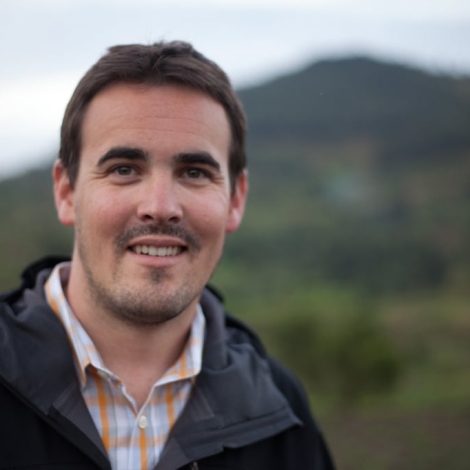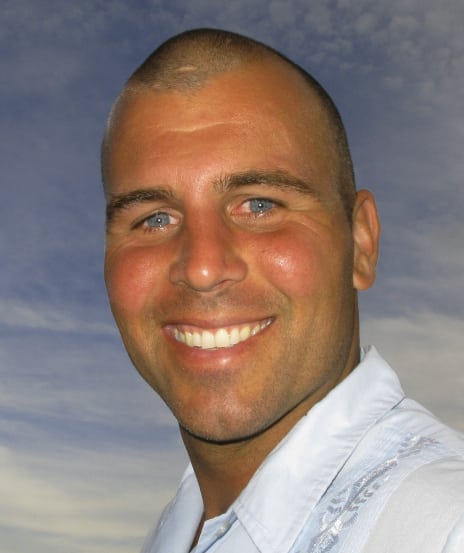Huge improvements in sensing technologies have begun to answer some of the vexing questions in global development projects: Do people use the new clean-burning cookstoves and water treatment devices they now have in their homes? In the past, the best way to tell was by asking people. And while surveys continue to have a place in data collection, new sensors that attach to devices, or that the people can wear, are revealing some surprises.
Evan Thomas has a front row seat to this new data deluge. Thomas is an assistant professor at Portland State University, director of the SWEETLab and COO of the global health organization DelAgua. Through Portland State, Thomas and his team have placed hundreds of sensors on stoves, pumps, water filters and in latrines in 12 countries, and they’re planning to place 450 more in Rwanda this summer. With all of that information at his disposal, we were excited to ask Evan Thomas five questions.
E4C: From the data you’ve begun to collect so far, have you learned anything surprising?
ET:We use sensors for several purposes. On handpumps, we use them as an operational tool to try improve the level of service. On latrines, stoves and water filters, we use them as research tools, as another way of measuring behavior.
In Rwanda, one interesting outcome has been that we’re able to study user behavior within a household, and see if people are using stoves or water filters consistently, in a way that may positively impact their health, rather than only having a broad view of reported or observed use. We can now study every use of a stove or filter in a household and have a much better understanding of how to influence positive behavior changes. We’re learning that some people binge on using the water filters and stoves, but that we need to emphasize more consistent use.
I think it’s possible to shift the donor community to a “pay-for-performance” model that pays only for demonstrated impact, rather than promises.
In a new study, we’re trying to find out if the presence of the sensors themselves influences people’s behavior. With support from USAID, the Government of Rwanda, the London School of Hygiene and Tropical Medicine and DelAgua, we’re running a randomized, controlled trial this summer.
We’ll have a set of sensors on water filters and we’ll explain to households what they are and why they are there. Then, in different set of houses, we’ll have sensors that are hidden from view, so that the people don’t know that they have a sensor on their water filter. We’ll be able to compare use and see if the sensors change how people behave. We, of course, manage this through an ethics board and households are enrolled as part of an informed consent process.
E4C: What do stoves have to do with global warming?
ET: Billions of people use firewood for their daily energy needs. The black soot emissions from open fires can cause respiratory disease, and it is thought to be a major contributor to global warming. The problem is that it is not as well characterized or as easily controlled as centralized power plants. And, of course, the use of firewood contributes to deforestation which can further exacerbate the effects of extreme weather events.
This is particularly obvious in Rwanda where the United Nations estimates that 98 percent of the wood fuel used every day is non-renewable. High efficiency cookstoves can reduce the use of firewood by 50-70 percent, and reduce harmful emissions.
E4C: You’ve called for a new kind of business model that incentivizes impact. DelAgua employs such a model using carbon credits. What is the advantage of that model compared to, say, a pay-as-you-go plan?
ET: There is considerable excitement around “pay as you go” models for stoves, filters, water pumps and other interventions in developing countries. The model tries to create an environment where local communities raise the funds for ongoing operation and maintenance. These are important efforts, but we should also remember that that billions of dollars are, and will continue to be, spent every year by donors based on the promise of impact rather than the evidence.
I think it’s important that we replace anecdotes of isolated successes with a more evidence-driven model.
We use carbon credits as a “pay-for-performance” mechanism. DelAgua is financing the deployment of several hundred thousand cookstoves and water filters, and we’re only repaid when we demonstrate that they have been properly used and had an impact. This is a shift from current charity models that do not have built-in incentives to ensure ongoing success. I think it’s possible to shift the donor community to a “pay-for-performance” model that increases the efficiency of donor dollars through paying implementers only for demonstrated impact, rather than promises.
E4C: Story time: What were you doing when you realized that you’re in the right line of work?
ET: I got started in global development as a student volunteer with Engineers Without Borders-USA in 2002. Meanwhile, I was on a different career path as an aerospace engineer and ended up working as a civil servant at the Johnson Space Center in Houston. I love NASA and most everything it does, but about five years ago I realized that I personally could have a greater impact on the world if I left and focused on our work in global development. I realized NASA would exist without me, but that our new concepts for carbon credits and sensors may not happen unless I gave it full-time attention. It’s been very exciting and gratifying to be part of developing new ways of doing global development work.
E4C: What is one of the promising trends in technology for global development?
ET: There is an increased emphasis on evidence on metrics, data, and proof. While numbers never will replace a nuanced understanding of the local context, I think it’s important that we replace anecdotes of isolated successes with a more evidence-driven donor model.

